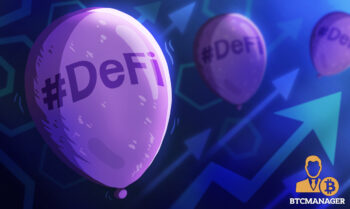2021-6-3 09:08 |
Research into decentralized finance (DeFi) yield farming activity has revealed some interesting insights into the most forked smart contract in the industry.
A research paper published on June 2 by the Nansen analytics firm delved into the MasterChef contract, which has been cloned more times than any other.
The smart contract was first deployed by SushiSwap in an attempt to leach liquidity from rival platform Uniswap in mid-2020. The move was a success at the time and more DeFi clones started to follow.
The MasterChef contract works by allowing ERC-20 tokens to be transferred into a protocol. Then the native platform token can be issued to users after they withdraw. The study searched all contracts relating to the term “chef” to find those that were clones of the original. It stated that there were around 28 “Chef forks.”
Following the DeFi chefThe research looked at capital flows to new farm contracts to obtain a sample size of around 40,000 farm entry and exit transactions. It revealed that these were initiated by a total of 33,882 unique addresses which can reveal how “sticky” the capital deposited within these contracts is.
The findings suggested that collateral did not remain in the contracts for very long,
“A large majority of farmers appear to exit within the first five days of entering a farm, and half of all farmers never stay beyond 15 days.”
This would suggest that the majority of DeFi yield farming is done by users seeking quick returns without much consideration for the qualities and security of the projects themselves.
Quickly losing interestNansen created a heat map to visualize the relationship between when a user enters a farm and the duration of farming activity, concluding:
“Unfortunately, there appears to be no clear relationship between when users enter a farm, and how long a user stays in the farm for.”
The findings revealed that 42% of yield farmers that enter a farm on the day it launches exit within 24 hours. It added that around 16% leave within 48 hours, and 70% of farmers would have withdrawn from the contract by the third day.
This is likely due to the reduction in yields over time, usually with a sharp decline shortly after the farm has launched.
It also revealed that the same farmers are seeking to scalp new farms with around 11 addresses entering at least six chef contracts within five days of their launch.
This could all go some way to explaining the token price pumps and dumps and the rapidity at which these DeFi farms come and go.
The post DeFi Farming Habits Revealed in New Research appeared first on BeInCrypto.
origin »Defi (DEFI) на Currencies.ru
|
|















